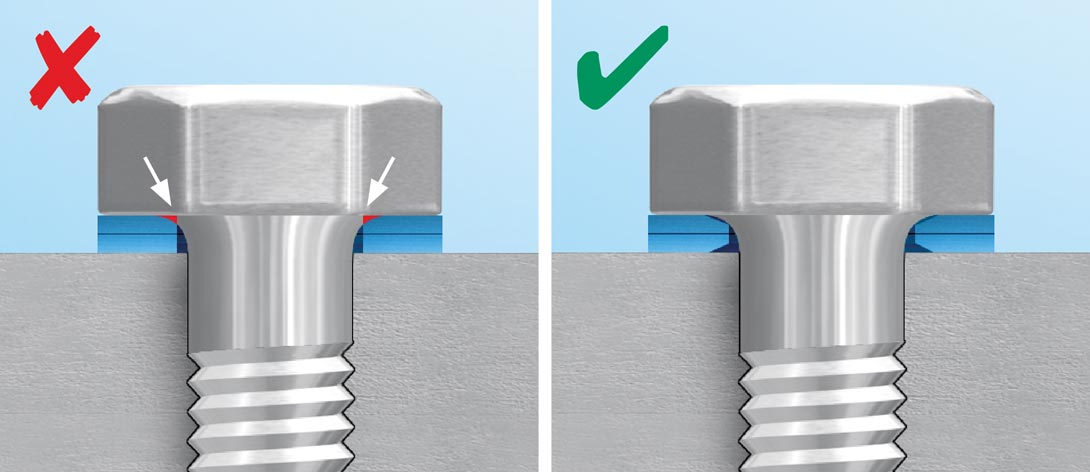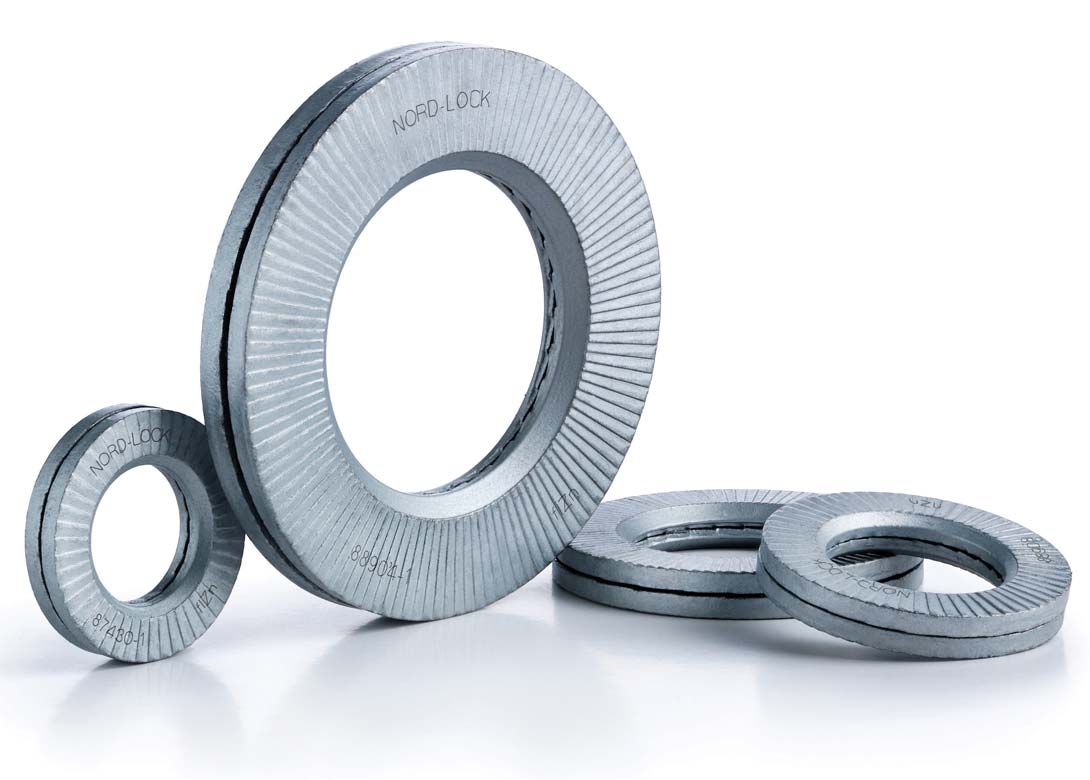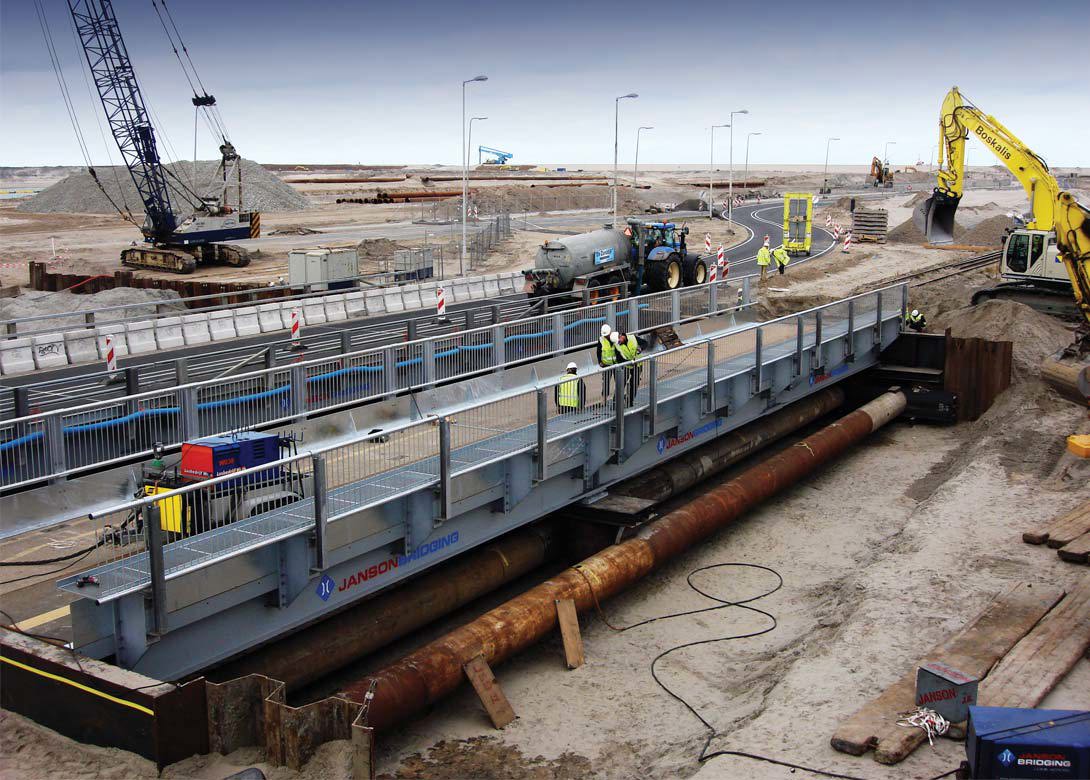Safely securing connections in structural steel
17 May 2016
From the Empire State Building in New York to the Eiffel Tower in Paris, and the Burj Khalifa in Dubai, steel has been used in some of the world’s most famous landmarks and is used everywhere around us, in buildings, bridges, highways or other civil engineering projects. Here Nord-Lock Group looks at the demands of working with structural steel and securing preloaded bolting connections.
Steel is one of the most commonly used materials in commercial and industrial building construction as it provides high design flexibility, durability, and low long-term maintenance costs. Since steel has higher strength than concrete, it allows for bigger and more slender constructions. It is also much lighter compared to frameworks made of concrete. Using steel frames is also time efficient since pillars, beams and other constructions elements can be delivered to the construction site ready to install. This, in turn, gives great savings potential.
Connecting structural steel
In the past, riveting was a common way to connect structural steel. Today, bolting and welding are the primary connection methods. Both methods have their advantages and constraints. A general practice is that welding is done at an earlier stage, in a workshop, where it can be executed in a controlled environment and then larger frameworks can be assembled by bolts at the construction site.
Performing welding at a construction site, however, may lead to uneven joint quality and is often very costly. It requires specialist skills and equipment, and is sensitive to the surrounding environment since uneven heating and cooling members may distort, which can result in additional stresses.
With bolting it is possible to assemble structural steelwork parts quickly and cost-effectively. It is also easier to get the steel parts fitted and adjusted during assembly on-site. Unlike welding, bolting is less susceptible to poor weather conditions and has less inspection requirements.
Steel construction elements are safety critical and need to ensure that the final result is strong and durable. Connections in such structures must comply with strict quality requirements and standards for the design (the Eurocodes) and fabrication (EN 1090-2) of structural steelwork. This means that both welding and bolting have regulations to follow according to Eurocode 3.

Securing preloaded bolting connections
Bolted connections can be commonly divided into preloaded and non-preloaded structural bolting assemblies. As recommended in EN 14399, preloaded bolts are almost always used on bridges. These bolts are specially designed to withstand vibration and dynamic loads, and also recommended when slip between joining parts is to be avoided. In buildings, preloaded bolts may be utilised where oversized or slotted holes are used to increase tolerances during assembly.
For preloaded bolted steel connections there are two different bolting systems developed and standardised in Europe (EN 14399): HV-sets (in accordance to EN 14399-4 and EN 14399-8) and HR-sets (in accordance to EN 14399-3 and EN 14399-7). Both systems are similar and consist of bolts, pre-lubricated nuts and washers. The radius under the bolt head is a particular characteristic for those bolt sets. It is larger than for normal standard bolts in order to decrease the notch effect.
The manufacturer of these bolt sets provides the customer with tightening guidelines that must be followed according to the European regulations. In spite of this practice, it is known that the bolts may still loosen due to dynamic loads and require time-consuming and costly retightening.
Using standard locking washers would be the easiest solution to cope with loosening of bolted joints or to decrease retightening frequency. However, for structural steel parts using HV/HR-sets this is not the case. The radius under the bolt head makes the use of common locking methods with HV/HR bolt sets impossible.
It is not only impossible design wise but also from a legal perspective since regulations in Eurocode only allow dedicated washers according to EN14399 for these types of bolt sets.
However, the Nord-Lock Group has developed a locking washer specially designed to fit the HV/HR sets. Each Steel Construction (SC) washer pair has chamfers on the inner diameter to ensure an optimal contact surface between the bolt and the washer. Nord-Lock wedge locking technology secures the bolt with tension instead of friction preventing the bolt from rotating loose. The washer is CE approved to be used together with HV bolt sets.

Steel Construction washers proven in the industry
The SC-washer already has a solid track record. One example is the Port of Rotterdam in the Netherlands, which every year is visited by around 35,000 seagoing vessels and 130,000 inland vessels. This makes it the largest port in Europe and the third largest port in the world.
Several years ago, the intensive increase of shipping traffic created a capacity problem, which made obvious the need to expand the Port. The work involved the construction of sea defences, the first port sites, as well as 3km of quay, roads, railways and bridges necessary to provide access. The bridges would be exposed to constant vibration and dynamic loads.
Janson Bridging Group, a company leader in building bridges, pontoons and RoRos, built the temporary rail bridges for this project. Since safety was of utmost importance, the company turned to Nord-Lock and secured the bolted joints of these bridges with SC-washers. No issues have been reported.
“The quick and easy assembly of the HV bolt set with the SC-washer meant Janson Bridging and its customer didn’t need to worry anymore about safety and reliability of the bolted joints. A successful project for all involved companies,” says Wilco Schuurs, sales manager at Nord-Lock Benelux.
No more loosening in steel structures
“Whenever bolts in steel construction structures start to loosen, the company has to send a technician to retighten them. This is costly and means the bolt security is no longer guaranteed,” comments Frank Götz, sales engineer at Nord-Lock Germany. “Having a bolt securing system in which these problems do not occur, even under dynamic loads and vibrations, is a real benefit and we have found that customers are really appreciative.”
In addition, safe usage with high strength bolts has been confirmed by the National Technical Approval No. Z-14.4-629 and by the European Technical Approval 13/0246 issued by DIBt.



